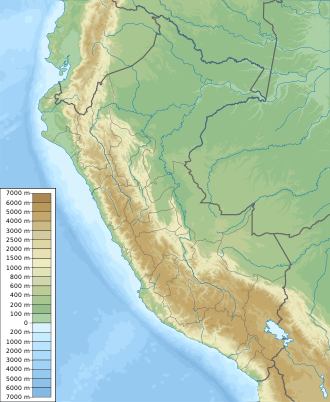Damage
The earthquake affected an area of about 83,000 km2, an area larger than Belgium and the Netherlands combined, in the north-central coast and the Sierra (highlands) of the Ancash Region and southern La Libertad Region. [7] Reports of damage and casualties came from Tumbes to Pisco and Iquitos in the east. Damage and panic scenes were reported in some parts of Ecuador. Tremors were also felt in western and central Brazil.
It was a system-wide disaster, affecting such a widespread area that the regional infrastructure of communications, commerce, and transportation was destroyed. The earthquake resulted in an estimated $250 million in property damage. [8] Several towns and villages were nearly completely destroyed as a result of the initial tremors and subsequent landslides.
U.S. First Lady
Pat Nixon led American aid efforts after the earthquake. She aided in taking relief supplies to earthquake victims (above) and visited children in hospitals (below).
The coastal towns and cities of Chimbote (the largest city in Ancash), Casma, Supe and Huarmey were hit hard; but the Andean valley known as the Callejón de Huaylas suffered the most intense and sweeping damage, with the regional capital, Huaraz, and Caraz and Aija being partially destroyed. Trujillo, the country's third-largest city, and Huarmey suffered minor damage.
In Chimbote, Carhuaz and Recuay, between 80% and 90% buildings were destroyed, affecting about three million people.
The Pan-American highway was also damaged, which made the arrival of humanitarian aid difficult. The Cañón del Pato hydroelectricity generator was damaged by the Santa River and the railway connecting Chimbote with the Santa Valley was left unusable on 60% of its route.
The Peruvian government has forbidden excavation in the area where the town of Yungay is buried, declaring it a national cemetery. The children who survived in the local stadium were resettled around the world. In 2000, the tragedy inspired the government to declare 31 May as Natural Disaster Education and Reflection Day, during which many schools practice an earthquake drill to commemorate the disaster.





